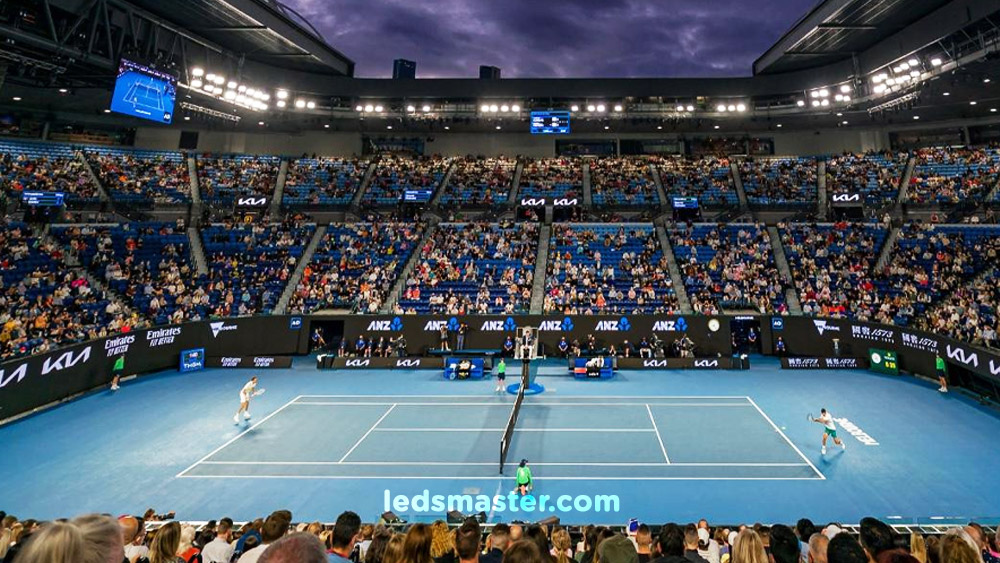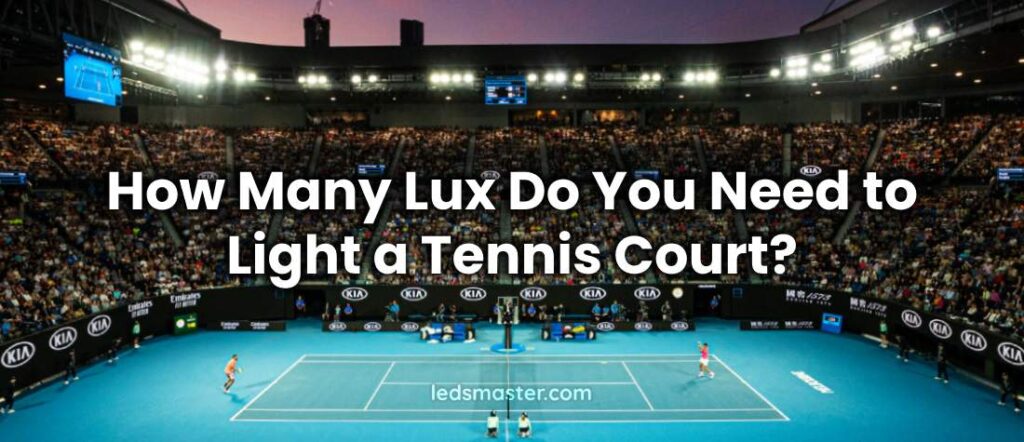When designing the lighting for a tennis court, it’s essential to consider not only the quantity of lights required but also the appropriate lux levels needed to effectively illuminate the playing area. Lux, a measure of luminous intensity per unit area, plays a crucial role in determining the quality of light on the court. It directly impacts visibility, contrast, and the overall playing experience for both athletes and spectators alike.
Lux requirements vary significantly across different levels of tennis courts. Recreational courts, where the emphasis is on casual play and relaxation, typically operate with lower lux levels ranging from 200 to 500. These settings prioritize a comfortable environment without excessive glare, allowing players to enjoy the game without the distractions of overly bright lighting. In contrast, courts designed for competitive play, such as local tournaments and club-level matches, require higher lux levels starting around 500. This ensures players can track the ball accurately and react swiftly to fast-paced exchanges, thereby maintaining the intensity and fairness of the game.
At the highest competitive levels, such as Grand Slam tournaments including Wimbledon and the Australian Open, lux levels exceed 1000 to 1500. These events demand intense and uniform lighting to meet the rigorous standards of professional play and broadcast requirements. High lux levels not only enhance visibility for players by ensuring clear visibility of the ball’s trajectory but also optimize the viewing experience for spectators, both on-site and through televised broadcasts. By understanding and implementing these specific lux requirements, tennis facilities can create an environment that enhances performance, safety, and overall enjoyment of the sport.
Table of Contents
ToggleWhat Is a Lux on a Tennis Court?
Before discussing the lux values required on a tennis court, it’s important to understand the concept of lux itself. Lux is a unit of measurement used to quantify illumination, specifically the amount of luminous flux (light) that falls on a given surface area. In essence, lux measures the brightness of the lighting on a tennis court by calculating the lumens per square meter.
The lux level directly impacts visibility and playability, with higher lux indicating brighter and more uniformly distributed light. For tennis courts, optimal lighting typically ranges from approximately 200 to 1500 lux. The specific lux requirement varies based on factors such as court size, competitive level, and environmental conditions. These variables influence the design and placement of lighting fixtures to ensure sufficient illumination for players to track the ball effectively and play safely under varying light conditions.
Achieving the right lux level involves careful planning and consideration of several factors. Court dimensions play a crucial role, as larger courts require more powerful lighting systems to maintain consistent brightness across the entire playing area. Additionally, the type of playing surface, whether it’s clay, grass, or hard court, can affect light reflection and absorption, influencing the perceived brightness on the court. Environmental factors such as natural light exposure and weather conditions also impact lighting needs, requiring adjustments to ensure optimal visibility throughout the day and under different weather conditions. By addressing these variables comprehensively, tennis facilities can create an ideal playing environment that enhances performance and enjoyment for players at all levels of competition.
How Many Lux Do We Need for a Tennis Court?

The lux requirement for lighting a tennis court varies significantly depending on the level of competition hosted. Major international and national tournaments such as Wimbledon and the Australian Open impose rigorous standards to ensure optimal visibility for players and spectators alike. These prestigious events typically necessitate lux levels well above 1000, meticulously designed to provide bright, uniform lighting across the entire court. Such high-intensity illumination enhances gameplay dynamics by minimizing shadows and glare, enabling players to react swiftly to fast-paced rallies and accurately track the trajectory of the ball. The clarity and consistency of light also contribute to fair play, ensuring that every shot is seen and judged accurately by players and officials alike.
Beyond its functional benefits, adequate lighting at these tournaments enhances the spectator experience both onsite and for viewers watching remotely. Clear visibility of the game action allows audiences to follow each moment of the match closely, appreciating the skill and athleticism displayed by the players. The strategic placement and precise calibration of lighting fixtures ensure that the court is evenly lit, enhancing the viewing experience and showcasing the sport at its highest level. Thus, high lux levels not only meet the technical demands of competitive play but also contribute to the overall excitement and engagement of tennis enthusiasts worldwide.
| Class of lighting | Type of tennis court | Lux required for the tennis court |
| Class I | International or national tennis tournaments (with broadcasting) | 750 to 1500 lux |
| Class II | Regional tennis competition | 500 to 750 lux |
| Class III | Recreational, training or high school tennis courts | 200 to 300 lux |
Good lighting levels are crucial for tennis players as they improve visibility and help players and spectators alike follow the action smoothly. Amateur and recreational tennis courts typically operate at lower lux levels, ranging from 200 to 300 lux. These courts prioritize a relaxed atmosphere over competitive lighting standards, allowing players to enjoy the game comfortably. The softer illumination enhances the overall ambiance, making it conducive for leisurely play and social interactions among players.
For competitive play, such as regional tournaments or higher-level matches, a lux level of at least 500 or more is recommended. This heightened brightness ensures players can perceive the fast-moving tennis balls with clarity, crucial for maintaining game intensity and accuracy. Additionally, optimal lighting creates a high-contrast background that aids both players and spectators in following the game more clearly. This clarity is essential during crucial points and rallies, where precise visibility of the ball trajectory can determine the outcome of matches and contribute to fair play.
In the case of top-tier international tournaments like the Australian Open and Wimbledon, lux levels of around 1000 or higher are essential. Such intense lighting not only supports player performance but also enhances broadcast quality, enabling cameras to capture every movement crisply for viewers watching live or on television. The strategic placement and calibration of lights ensure minimal shadows and consistent brightness throughout the court, maintaining visibility under various conditions. This meticulous attention to lighting detail not only meets the rigorous standards of professional competition but also enhances the spectator experience, whether they are onsite or watching from afar.
If you’re considering lighting design for a tennis court, whether for recreational use or competitive play, please don’t hesitate to contact us. We offer tailored solutions to ensure your tennis court lighting meets the specific needs and standards of your facility. Our expertise in lighting design ensures optimal performance and safety, enhancing the overall enjoyment and success of tennis activities at your venue.
Conclusion
Designing the lighting for a tennis court involves careful consideration of lux levels to ensure optimal visibility and performance for players and spectators alike. From recreational settings requiring lower lux for a relaxed atmosphere to competitive tournaments demanding high-intensity illumination exceeding 1000 lux, each scenario necessitates tailored lighting solutions. By meeting these standards, tennis facilities can enhance gameplay, support fair competition, and elevate the overall experience of the sport for participants and fans worldwide.

